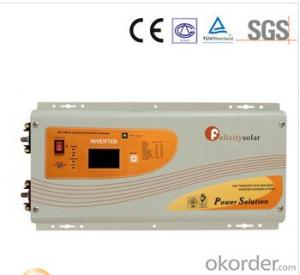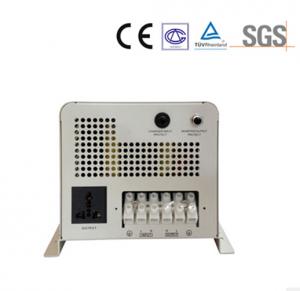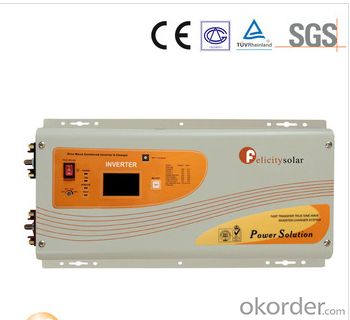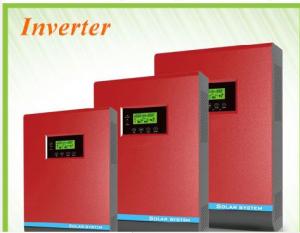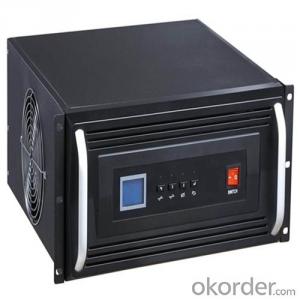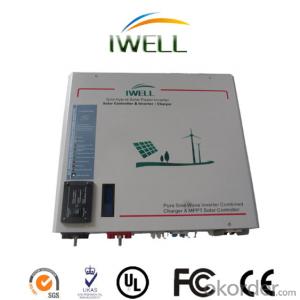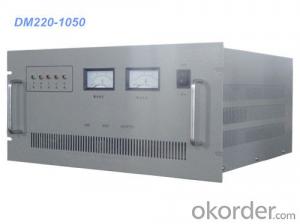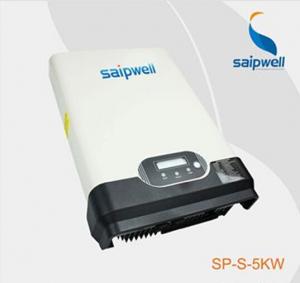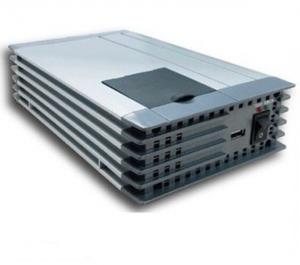Solar Inverter, 3.5kva 24V High Quality/Reasonable Price pure Sine Wave Solar Inverter
- Loading Port:
- Shanghai
- Payment Terms:
- TT or LC
- Min Order Qty:
- 400000 watt
- Supply Capability:
- 3000000 watt/month
OKorder Service Pledge
OKorder Financial Service
You Might Also Like
1. Structure of Solar Inverter, 3.5kva 24V High Quality/Reasonable Price pure Sine Wave Solar Inverter Description
The inverter series is an electronic product that has been designed and built to take low DC woltage power from batteries and convert it to
standard AC power like the current you have at home.
The Inverter series is a DC-to-AC with auto line-to-battery transfer and intergrated charging system. Inverter series powers from ACpower
and DC source, serving as an extended run UPS. When AC cable is connected to a wall socket, utility power goes to connected equipment
and/or charges the battery set via charging system. In Inverter mode, the Inverter series automatically converts battery energy into AC power
for backing up the connected devices.
2. Main Features of Solar Inverter, 3.5kva 24V High Quality/Reasonable Price pure Sine Wave Solar Inverter
• Super efficient, DC to AC conversion, minimizing charging losses
• Input Voltage rangeselect
• 5kva pure sine wave solar inverter
3. Solar Inverter, 3.5kva 24V High Quality/Reasonable Price pure Sine Wave Solar Inverter Images
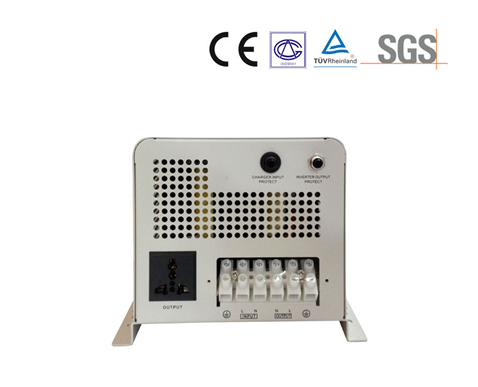
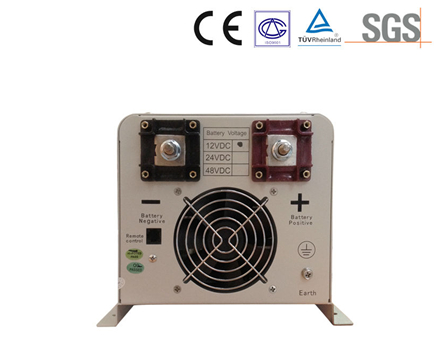
4. Solar Inverter, 3.5kva 24V High Quality/Reasonable Price pure Sine Wave Solar Inverter Specification
Model | FL-IVP3524-3500VA |
Rated output power | 3500VA |
Max charge current | 35A |
Normal DC input voltage | 24V |
Nominal input power | 110Vac/120Vac/220Vac/230Vac |
Input voltage range | 96~132Vac/155~272Vac |
Charge current regulation | Charge current adjustable:25%,50%,75%,100%(Optional) |
Normal output frequency | 60Hz/50Hz |
Over load protection(SMPS) | Circuit breaker |
Output short circuit protection | Circuit breaker |
Efficiency | >95% |
Output voltage waveform | Pure sine wave |
5. FAQ of Solar Inverter, 3.5kva 24V High Quality/Reasonable Price pure Sine Wave Solar Inverter
Q1:Can we visit your factory?
A1:Sure,welcome at any time,seeing is believing.
Q2:Which payment terms can you accept?
A2:T/T,L/C,Moneygram,Paypal are available for us.
- Q: Can a solar inverter be connected to the grid?
- Yes, a solar inverter can be connected to the grid. In fact, grid-connected solar inverters are designed to convert the direct current (DC) generated by solar panels into alternating current (AC) that can be fed back into the electrical grid. This allows excess electricity produced by the solar panels to be distributed and used by other consumers, and in some cases, even earn credits or financial compensation through net metering.
- Q: Can a solar inverter be used with solar-powered air conditioning systems?
- Yes, a solar inverter can be used with solar-powered air conditioning systems. The solar inverter is responsible for converting the direct current (DC) generated by the solar panels into alternating current (AC) that can be used to power various electrical appliances, including air conditioning units. By connecting the solar inverter to the solar panels and the air conditioning system, the generated solar energy can be efficiently utilized to power the AC system.
- Q: What is the purpose of a solar inverter?
- The purpose of a solar inverter is to convert the direct current (DC) electricity generated by solar panels into alternating current (AC) electricity that can be used to power household appliances or be fed back into the electrical grid.
- Q: Can a solar inverter be used with different grid voltages or frequencies?
- No, a solar inverter cannot be used with different grid voltages or frequencies. Solar inverters are designed to convert the DC power generated by solar panels into AC power that matches the specific voltage and frequency of the grid it is connected to. Using a solar inverter with different grid voltages or frequencies can result in compatibility issues and potentially damage the equipment.
- Q: How does the voltage regulation affect the performance of a solar inverter?
- Voltage regulation plays a crucial role in the performance of a solar inverter. It ensures that the output voltage of the inverter remains stable and within an acceptable range, regardless of fluctuations in the input voltage. This stability is vital for the efficient operation of the inverter and the overall performance of the solar power system. Improper voltage regulation can lead to various issues such as increased power losses, reduced energy production, and potential damage to connected devices.
- Q: Can a solar inverter be used with a solar-powered electric gate system?
- Yes, a solar inverter can be used with a solar-powered electric gate system. The solar inverter is responsible for converting the direct current (DC) produced by the solar panels into alternating current (AC) that can be used to power the electric gate system. This allows for efficient and reliable operation of the gate system using solar energy.
- Q: How does a solar inverter handle reactive power?
- A solar inverter handles reactive power by using power factor correction techniques. It actively manages the flow of reactive power between the solar panels and the grid, ensuring that the power factor remains close to unity. This helps to optimize the efficiency and performance of the solar system, while also maintaining the stability of the grid.
- Q: How does a solar inverter affect the voltage stability of a solar system?
- A solar inverter plays a crucial role in maintaining voltage stability in a solar system. It converts the direct current (DC) generated by solar panels into alternating current (AC) suitable for use in homes and businesses. By monitoring and adjusting voltage levels, a solar inverter ensures that the power output remains consistent and within acceptable limits. This helps to prevent voltage fluctuations, voltage drops, and other electrical instabilities, ensuring a stable and reliable power supply from the solar system.
- Q: What is the role of a solar inverter in a grid-tied system?
- The role of a solar inverter in a grid-tied system is to convert the direct current (DC) electricity produced by the solar panels into alternating current (AC) electricity that can be used by the electrical grid or consumed by the appliances and devices in a home or business. It also ensures that the solar energy generated is synchronized with the grid's voltage and frequency to enable efficient and safe transfer of power. Additionally, the solar inverter monitors and controls the flow of electricity between the solar panels, the grid, and any energy storage systems that may be connected to the system.
- Q: Can a solar inverter be used with different types of grounding materials?
- Yes, a solar inverter can be used with different types of grounding materials. However, it is important to ensure that the grounding system is compatible with the specific requirements and guidelines provided by the manufacturer of the solar inverter. The grounding materials used should meet the necessary safety standards and provide proper electrical grounding for the solar installation. It is recommended to consult with a qualified electrician or solar professional to determine the appropriate grounding materials for your specific solar inverter and installation.
Send your message to us
Solar Inverter, 3.5kva 24V High Quality/Reasonable Price pure Sine Wave Solar Inverter
- Loading Port:
- Shanghai
- Payment Terms:
- TT or LC
- Min Order Qty:
- 400000 watt
- Supply Capability:
- 3000000 watt/month
OKorder Service Pledge
OKorder Financial Service
Similar products
Hot products
Hot Searches
Related keywords
